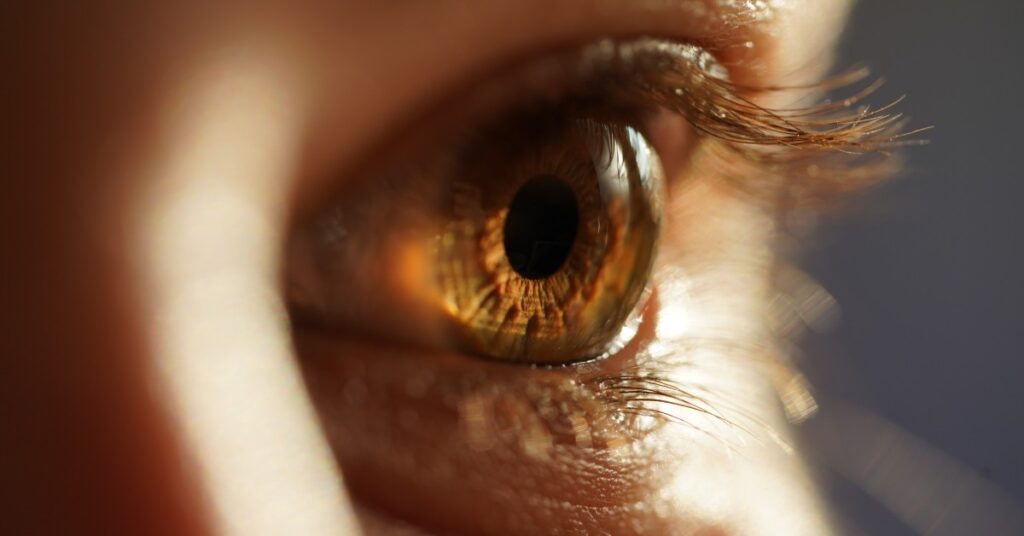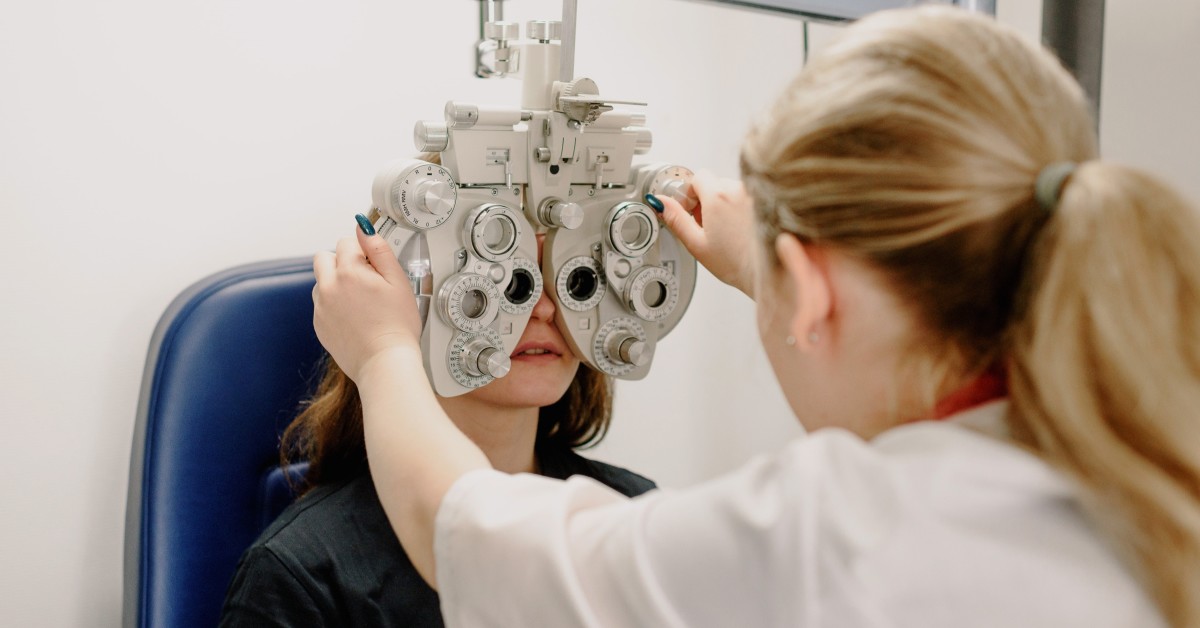
Why Become a Sports Vision Optometrist?
Sports vision optometrists work with patients at all levels, including [...]

Optometry practitioners deliver 85 percent of all primary eye care in the United States, according to the American Optometric Association (AOA). And their impact extends well beyond vision correction; these professionals can also detect such systemic diseases as high blood pressure, diabetes, heart disease, cancer, Lyme disease, lupus, and other major health problems by examining the lens, retina, and optic nerve.
From comprehensive eye exams to vision screenings, optometrists help correct vision impairments by prescribing eyeglasses or contact lenses and providing referrals for surgery. They treat such common refractive conditions as near-sightedness, farsightedness, astigmatism, and presbyopia and also screen or more severe eye disorders and diseases that may lead to low vision, vision loss, or blindness.
Some optometrists choose to specialize in a field or practice. Options include:
More than 16 million Americans struggle with untreated or undiagnosed vision impairments, including eye diseases. These include ocular diseases that manifest no symptoms while developing; early detection is only possible through annual eye exams. To specialize in ocular disease treatment, you’ll need to earn a Doctor of Optometry (OD) degree and complete a subsequent one-year residency.
Read on to learn more about becoming an ocular disease optometrist. This article answers the questions:
Much like a general optometrist, an ocular disease optometrist specializes in examining, detecting, diagnosing, treating, and managing eye disorders and diseases. Ocular diseases can go undetected without routine eye exams. However, according to the American Optometric Association (AOA) annual American Eye-Q® survey, 52 percent of Americans are unaware that a comprehensive eye exam includes such a detailed screening.
While ocular disease optometrists can manage and treat certain eye conditions and prescribe medications, they cannot perform all ophthalmic functions, such as surgical procedures. Ophthalmologists are eye doctors with medical school experience and licensing to perform eye surgeries and other advanced medical treatments. Ocular disease optometrists examine and diagnose such conditions and then refer surgical procedures, like oculoplastic or cataract surgery, to an ophthalmologist.
An ocular disease optometrist’s primary duties include performing vision screenings and eye exams, prescribing corrective lenses, creating treatment or care plans for more serious eye conditions, and offering vision therapy and low-vision rehabilitation. However, specializing in the management of ocular diseases gives these practitioners additional experience in identifying abnormalities, delivering non-surgical treatment, and educating patients on preventative measures. Eye disorders often go undetected without routine exams to diagnose some of the most common eye health conditions, which include:
A comprehensive eye exam can detect some of the most common ocular diseases. In addition, these evaluations can detect health problems associated with cancer, diabetes, high blood pressure, and other diseases. In 2017, optometrists discovered more than 400,000 cases of diabetic retinopathy in patients not yet diagnosed with diabetes by a primary care physician.
As the population ages, eye conditions and ocular diseases such as age-related macular degeneration, cataracts, dry eyes, glaucoma, and presbyopia are becoming more common. Also, with the rise of technology and computer use, computer vision syndrome (CVS), known as digital eye strain, impacts many individuals across the entire lifespan.
Conditions of contemporary life suggest that ocular disease will be on the rise in the decades to come. Optometrists specializing in this concentration can reduce the impact, assist with early detection, and help patients create better habits to avoid the onset of eye abnormalities.
All optometrists must earn a Doctor of Optometry (OD) degree from an accredited program, regardless of subspecialty. After completing their doctorate, recent graduates have an option to pursue an additional residency year to enhance their education and hands-on experience with ocular diseases. Post-graduates can apply for a residency program through the Optometry Residency Match (ORMatch) to view participating programs and available opportunities.
The New England College of Optometry (NECO) provides residency opportunities accredited by the Accreditation Council on Optometric Education (ACOE) for students specializing in ocular diseases. In addition, the University of California Berkeley Herbert Wertheim School of Optometry and Vision Science offers a post-graduate ocular disease residency designed to develop advanced competency in direct patient care. Most residency programs run from July 1 through June 30; residents work Monday through Friday within traditional working hours. While some patient care may run after hours, residents typically do not have on-call duties.
Ocular disease courses, built into the optometry school curriculum, include lectures mixed with lab hours. Yet, students who seek to gain advanced knowledge can opt to take a year-long residency following their doctorate program for an even more valuable experience.
A Doctor of Optometry (OD) program takes four years to complete. However, some schools, such as NECO and the Salus University Pennsylvania College of Optometry, offer an accelerated OD that takes three years to complete. While pursuing your doctorate, optometry programs blend classroom instruction with supervised clinical experience.
Although optometrists and ophthalmologists share many of the same responsibilities (besides eye surgery), their education requirements vastly differ. Optometrists must obtain a four-year doctorate in optometry with an optional one-year residency program. In contrast, ophthalmologists need a medical degree (MD) through four years of medical school and four to five years of additional specialized training.
Requirements at the 23 accredited optometry colleges and schools in the United States vary, but most accredited programs require:
A Doctor of Optometry program includes foundational coursework during year one and more advanced instruction during year two. The third year of optometry school typically consists of clinical experience and elective coursework through available optometric concentrations or specialties, including ocular diseases. Lastly, the final year includes clinical rotations for students to gain real-time experience working with patients and applying the knowledge and competencies learned from their coursework. Courses you can expect during your tenure in optometry school—such as NECO—include:
Following your OD degree and one-year residency program in ocular diseases, you’ll need to obtain your license by passing the three-part National Board of Examiners in Optometry (NBEO). This exam tests your knowledge of applied basic science, patient assessment and management, and clinical skills. You’ll also be required to earn continuing education credits through lifelong learning in order to renew your license every two years.
Ocular disease optometrists earn pretty lucrative salaries, averaging $124,300 per year. Optometry is a growing career expected to produce approximately 1,700 new roles annually through 2031. The salary range for ocular disease optometrists varies based on geographic location, years of experience, and practice setting. Practice settings include private practice, optical retailers, community health centers, hospitals, and other settings needing optometric services.
All accredited Doctor of Optometry (OD) programs currently provide on-campus instruction for in-person learning experiences. However, with the rise of online education increasing flexibility and accessibility to more students, the New England College of Optometry (NECO) aims to become the first accredited optometry program to offer a hybrid OD degree beginning in the fall of 2023. The hybrid program will allow students to earn their OD remotely, fulfilling clinical rotations where they live.
Optometry is essential to more than just vision screenings; it plays a vital role in overall healthcare. Ocular disease optometrists have advanced knowledge in treating and managing more severe abnormalities and educating patients on better methods to prevent or delay the onset of some of the most common eye diseases. It’s a field that should grow as the US population ages.
.
Questions or feedback? Email editor@noodle.com

Sports vision optometrists work with patients at all levels, including [...]

Cornea and contact lens optometrists are highly educated practitioners; they [...]

Forensic optometrists employ optometric science to assist the police in [...]

Optometrists conduct eye exams that detect not only myopia, glaucoma, [...]

The majority of our population will experience some level of [...]
Categorized as: Optometry, Nursing & Healthcare